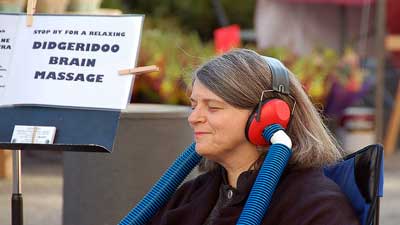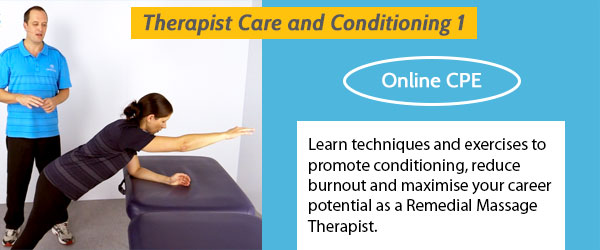Myofascial release (MFR), is one of the techniques that is commonly taught within Remedial Massage courses in Australia. What would you say if someone told you that you can’t “release” fascia, at least not without a scalpel?
You would probably gasp, “huh?” or laugh knowingly at the poor misinformed person who obviously doesn’t understand the science of fascial release. I mean, its been proven scientifically, right? Well…no not really. Get ready for another myth busting article!
What is Fascial Release?
“Myofascial release is an attempt to bring about changes in the myofascial structures, by stretching or elongation of fascia, or mobilizing adhesive tissues. The practitioner moves slowly through the layers of the fascia until the deep tissues are reached.” (wikipedia)
This is pretty much how most practitioners would explain or recognise MFR. With each glide we are systematically restoring length to myofascial tissues, unwinding, lengthening and “releasing”. Now from an experiential point of view as a Remedial Massage Therapist this is something that is commonly experienced by both therapist and client. You can observe changes in ROM assessment, in tissue texture upon palpation and subjectively via a client’s experience of stiffness. So this proves that fascia is being released? Well, not really. What it proves is that after MFR range of motion increases, tissue texture changes and feelings of tightness change. Assuming that we have lengthened fascia is probably one step too far.
Join the Bright Health Training newsletter
“So you can’t lengthen fascia?”
Yep, that’s right, well at least you can’t within normal massage – to lengthen fascia you need to apply forces to the fascia that would far exceed the impact applied to the body in a UFC bout! Fascia is tough, very, very tough and when we are applying forces in the region of a couple of kilos of pressure for short durations, fascia does not release and lengthen.
One good example of why pressure doesn’t lengthen fascia is think about the muscles that you are sitting on, that are under constant pressure, do they “release” and stretch? If you’re like most people you’re probably quite tight around the hips, sustained pressure is not really releasing anything. If it was, when you stood up, you would have one very “released” backside!
So what is happening?
There is an excellent article discussing the possible mechanism of what occurs with myofascial release by Simmonds et al (2013), that article details a lot of the discussion around myofascial release. Again to summarise for you here, it basically argues that the release that can be observed by therapists and clients is actually a neurophysiological response to massage pressure. Simmonds et al, are basically stating that it is a relaxation of muscle tissue that occurs in response to stimulation of nerve endings within the fascia, and mostly superficial fascia for that matter.
Another possibility is that the ground substance may be changed by pressure, the ground substance is the colloidal material that sits within the connective tissues, mostly water, it has solutes that may make the tissue feel stiffer, especially in times of dehydration. Applying forces to the fascia may affect the ground substance in someway. Maybe the fluid properties change with the fascia and that is responsible for the palpable changes, that you can feel, to tissue with sustained pressure or a myofascial glide? Maybe, but this is just a theory.
From what we can find in fascia research, it is becoming quite clear that you cannot mechanically release fascia. In other words, it is not the mechanical stretching of fascial tissue that creates a lengthening. It is the nervous system responding to touch that creates a change in the client’s body, normally by relaxing muscle tone.
What does this mean for a Remedial Massage Therapist, or Manual Therapist?

What exactly is being massaged?
Myofascial release techniques still have tremendous value, but we need to have a shift in mindset to understand that the way these techniques are performed needs evaluation. If we can’t release fascia mechanically and it is up to the client’s brain to effect the change, then what are we actually massaging here?
The big shift that needs to happen in remedial massage is understanding that what we can do mechanically to the human body with massage is very limited, (with the possible exception of lymphatic drainage) it is nearly all about how the client’s nervous system responds to massage. Previously we have discussed how relaxation massage is as good or possibly better than remedial massage for lower back pain. Within that article the multifactorial nature of pain and how the brain learns to feel pain was discussed. We as Massage Therapists need to realise that the body is not a lump of meat (and fascia) that needs mechanical “releasing”. It is a living, sensitive, intelligent machine that we need to work with, not work on.
“Should I stop doing MFR?”
No, MFR is an effective way to achieve a decrease in soft tissue tone. Through sustained gliding over the body’s myofascial tissues you can achieve a progressive relaxation of muscle tone. You may also be effecting change in the ground substance of the fascia and who knows what effect that might have on the body? Done correctly, myofascial release feels awesome, you can literally feel the change occurring in your body as the technique is applied. Used in a structured way and you can achieve a targeted change to a client’s body. As a therapist you can re-test after a myofascial treatment and see changes in range of motion and tissue texture. The client can report a feeling of freedom and relief from pain, so that can’t be a bad thing can it?
If there is anything that we need to stop doing it is causing more pain! “No pain, no gain” theory might apply to personal training, resistance exercises and endurance training, but for massage it is more likely that extreme pain is only counter-productive. Now that being said, a moderate level of discomfort to give the client a feeling of relief is probably ok. It very much comes down to the individual. If your client really likes a firm massage, and they receive the style of massage, it is likely the client will respond to the treatment in a positive way. But a remedial massage therapist relentlessly smashing someone on a massage table is not therapy, it is just torture… that the client is paying for!
Acknowledgement
I must acknowledge the excellent work of Paul Ingraham, and his website saveyourself.ca. Paul is a qualified Massage Therapist in British Columbia, Canada, where they have the longest training in massage in the world. He practiced for ten years before leaving to study science. He has a fantastic website devoted to the science of massage and it’s a must read for any Remedial Massage Therapist… Even if it does shatter many of our beliefs of what massage achieves, or at least how it achieves outcomes.
Paul has a lengthy (12,000 word) discussion on the topic of fascial release and takes the time to “dissect” the issue in much greater depth than I’ve done here today. He looks at all the latest research from Dr Robert Schleip and others.
Conclusion
Whilst there is some incredible research going on in the area of fascia and therapies, the research has yet to show any evidence that fascia can be released by manual therapy. At best it may soften some very minor restrictions, but it is very unlikely to effect the changes that can be seen post- treatment. It is much more likely that the client’s brain responds to treatment by decreasing muscular tone which sees a lengthening in range of motion, tissue texture changes and feelings of release. So remember, we are working with the client’s nervous system and therefore the client’s comfort through the treatment is more important than the amount of pressure applied.
I’d love to get some feedback from you guys on this one. If you have a question or something to add, feel free to leave a comment below.
References
Paul Ingraham, saveyourself.ca, (viewed 14th March, 2014) Does fascia matter?
Wikipedia, Myofascial Release. (viewed 14th March, 2014)
Simmonds, N, Miller, P, Gemmell, H. 2010 A theoretical framework for the role of fascia in manual therapy. Journal of Bodywork and Movement Therapies. doi:10.1016/j.jbmt.2010.08.001
viewed at: http://www.brianesty.com/pdfs/Manual%20Therapy%20Simmonds.pdf
Additional Reading
Whilst not used in this blog another really good read on Fascial Release and Foam Rollers.
Image Credit
Credit to Alex @ https://www.flickr.com/photos/spleenboy/ for the “didgeridoo brain massage” image. I love it!



Comments 2
Hi Aran,
Thank you for your article. I wonder if you’d find the following resources/researchers helpful: Dr Paul Standley (Dosed myofascial release in three-dimensional bioengineered tendons: effects on human fibroblast hyperplasia, hypertrophy, and cytokine secretion. J Manipulative Physiol Ther 2013;36:513-521) Dr Robert Schleip, Dr Jean-Claude-Guimberteau (Strolling Under the Skin documentary DVD also available on youtube – approx 30 min). I’m disappointed that you have yet to experience or study the John F Barnes approach to myofascial release. Current research, quite independent from John’s work, is backing up what he has been teaching for decades. There are massive objective and subjective differences noted clinically and documented using his approach – including case studies published in peer-reviewed journals by Dr Carol Davis and others. From the perspective of many, John solidifies and hones in on very specific treatment principles making his approach the oldest of modern-day styles, most effective, and purely authentic. Sadly, many other versions have arisen over the last 50 years and have diluted the industry leading people to experience and believe what you’ve shared in your well-written article. The world of fascia is brilliant and offers a whole new world of discovery….thank you for sharing your perspective.
Hi Joni,
Thank you for your comments. I am trying to access the article you mention. It is very interesting, alas, I don’t have direct full access to the article, so I will have to wait.
I am a little curious though by what you mean by research “backing up” what John Barnes has been teaching. I am familiar with his work as his approach was the first type of MFR I was taught. However, the research into hyperplasia, hypertrophy and cytokine secretion is quite different to John Barnes proposed mechanisms to MFR, as is Schleip’s work. Can you clarify what you mean by “backing up” am not aware of the current Barnes model of MFR, has it changed since his original work?
Aran